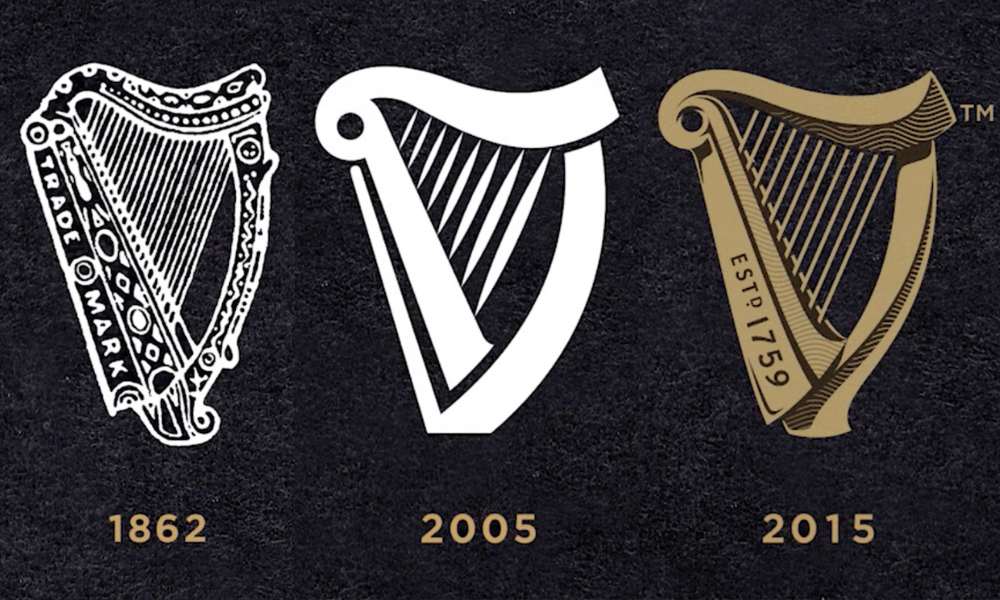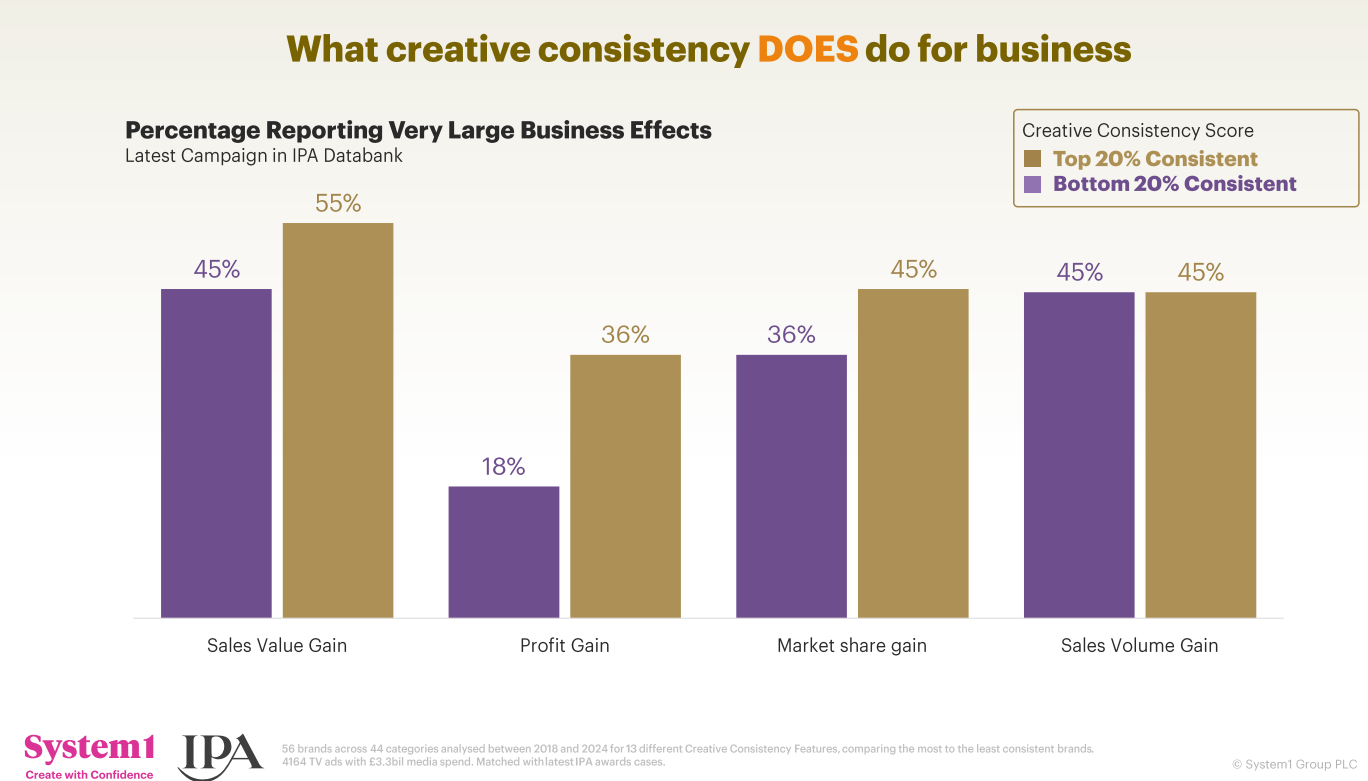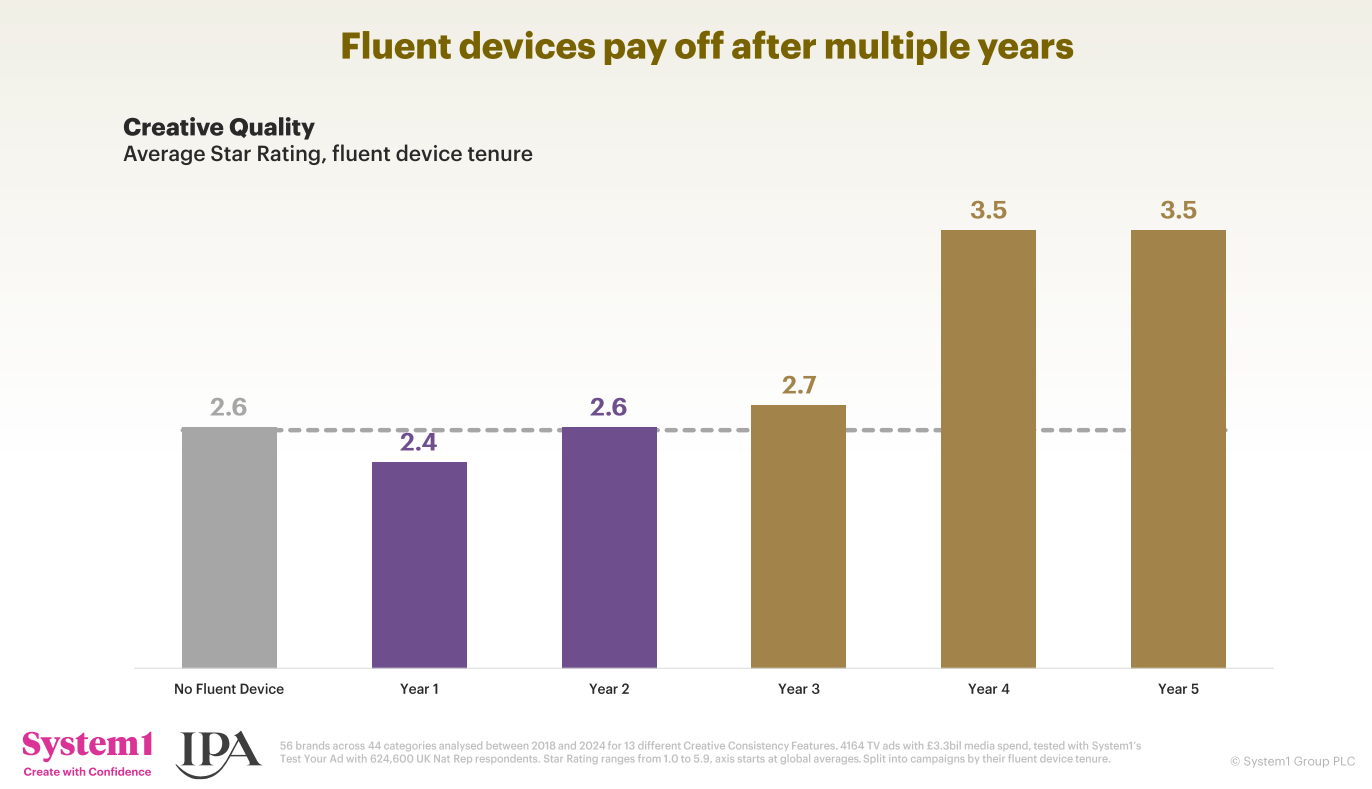
We’re often chasing the next big thing in marketing. With most marketers acting like magpies – chasing the shiny new objects. But what if one of the best tools for effectiveness was right under our noses all along? Consistency. Let’s talk about consistency and how it’s the backbone of successful B2B marketing strategies. It’s been a big ole’ topic of conversation recently with the likes of Ritson, System1 and the IPA all releasing content and research surrounding consistency and repetition in marketing. Let’s dive in.
The Power of Showing Up
Consistency isn’t just about repetition; it’s about building trust and recognition. A recent study by System1 and the IPA, found that brands with consistent creative approaches saw a 12-point increase in their Star Rating over time. This isn’t just a minor improvement – it’s a game-changer in brand recognition and recall. There’s also empirical evidence to suggest consistency has drastically positive effects on profit gain.
If you don’t know, the Star Rating is a way that System1 effectively measures brand effectiveness – the long-term effects of marketing activity, which covers general business and profit growth over time.

Source: System1 & the IPA report
Dropping the Funnel View
B2B marketing often falls into the trap of siloed thinking. Not in terms of team structure – although we all know the Marketing x Sales relationship could be better – but the way we think about the different stages of ‘the funnel’. I won’t bore you with my views on the ******* funnel marketing but you can guess from those asterisks or read my previous blog here. Marketers separate brand building, demand generation, and sales activation into different focus areas. But here’s the truth: these elements should work in harmony, blended, to accommodate the modern buyer’s self-serve journey.
Buyers don’t read a ‘ToFu’ piece first, followed by a ‘MoFu’ piece, and then neatly a ‘BoFu’ piece at the end. It’s not the linear whitepaper, eBook, demo journey. It’s more like spaghetti junction with chops and changes taking buyers all over the place until they get the information they need to be able to trust the brand and so that they can internally sell it to the wider buying committee.
Consider that 61% of B2B buyers will read three to seven different pieces of content before speaking with a salesperson. On average, the B2B buyer only gets in touch at about the 80% mark leaving the rest of the buying process as a self-serve journey. This underscores the need for consistent messaging across all touchpoints as the readers jump about. Sequential messaging is dangerous. Your proposition should be cohesive whether a prospect is reading a blog post, watching a product demo, or talking to a sales rep.
So, how do we apply consistency in B2B marketing?
Here are some actionable steps to improve your consistency:
Maintain Brand Identity: Create a visual and tonal language that’s distinctively yours and stick to it. Don’t change the colour palette because Steve from Accounts Payable says he’s bored of the salmon pink in his LinkedIn feed.
Develop Distinctive Assets: Depending on whether you’re a How Brands Grow fan or an Orlando Wood follower, you’ll know these as distinctive assets or fluent devices. These are the elements, sounds, iconography and tone that make your brand distinctive. You need them to build consistency across campaigns and channels, and you will see a return over time.

Source: System1 & the IPA report
Align Teams: Ensure marketing, sales, and customer service teams are all delivering the same message, in the same way.
Plan for the Long-Term: Don’t just focus on quarterly results. Think years ahead. Consistency compounds over time, because guess what, it becomes even more consistent.
Be Omnipresent: Show up consistently across the core channels where your audience might be. Data from magic numbers shows that each time a channel is added to your campaign, the effectiveness improves. This will only be the case if the messaging, creative and proposition is consistent across them though – otherwise there’s no compounding benefit.

Source: Dr Grace Kite
In B2B marketing, consistency might not be the flashiest thing to include in your strategy, but it’s undoubtedly one of the most effective elements. It’s about being there, reliably, with a message and identity that resonates.
With the buyer journey becoming ever more self-service, and multiple stakeholders across a buying committee self-consuming (and sometimes even sharing your content and proposition with eachother), your consistent brand presence across touchpoints is more crucial than ever. It’s not just about being the loudest; it’s about being the most reliable and recognisable voice in your industry. That’s what builds market share of voice and subsequent market share.
By focusing on consistency in your B2B marketing efforts, you’re not just building a brand. You’re creating a trusted partner that your audience can count on, time and time again. And in the complex world of B2B relationships where trust is held on a pedestal, that’s worth its weight in gold.